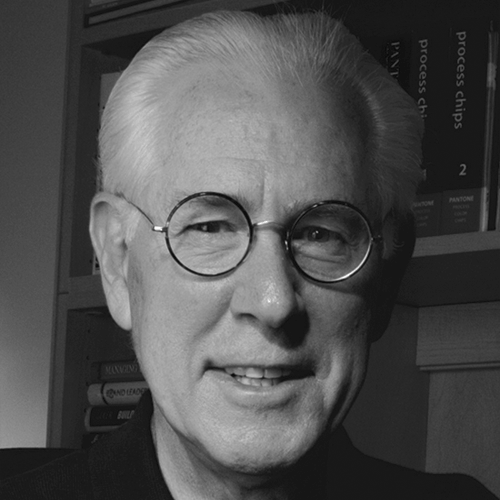
Lindon Leader
Corporate Designer and Founder, Leader Creative
Following his two-word design philosophy: simplicity and clarity, Lindon Leader has emerged as a preeminent corporate designer, bringing to life numerous ubiquitous logos – such as FedEx’s, with its ingenious optical illusion — over a 30 year career. The founder of Leader Creative shared his expertise to those looking to make their mark in an in-demand industry and design the job of their dreams.
Companies of all sizes are increasingly seeking out a brand identity to set them apart. Brand identity, Leader explains, “provides the client with an integrated system of graphic and verbal elements that serves to distinguish the client’s offering from competitors.” The branding brainiac reminds designers that when it comes to working with clients, you’re there to advise, not insist. At the end of the day, it’s the client’s role to make the decisions.
However, you should still approach client work with consistency, clarity and confidence. “If a client asks why you recommend a particular design and you respond, “I don’t know, I just really like it” you won’t get very far in the corporate design world.” When you present your work with objectivity, creativity and responsibility, Leader says, “the client will make the right decision.”
Though it may seem that good work speaks for itself, and will catapult its creator to design-world glory and keep business coming in, the creative product is only a small piece of the puzzle. Being able to work with clients and research a client’s competition, for example, aren’t just nice additions to your main offering. Leader shares advice he took to heart as a junior designer, advice that would inform his own business practice. Pure creativity is a mere twenty percent of a corporate identity project, his boss told him. “The other eighty percent is consumed by new business marketing, writing proposals, strategy, research, client service, billing and running an office.” Leader now offers the same caution he was given to aspiring firm owners: “if you can’t deal with the other eighty percent, become a sculptor.”
Reflecting on his early days as a designer, Leader acknowledges that young freelancers may both accidentally and deliberately undervalue themselves, engaging in projects for less than the going rate as they’re building their portfolio. “A little money is better than no money when one is just starting out,” he shares, adding that it can be “hard to walk away from a project even though you know the prospect is taking advantage of you.” Leader recommends all designers pick up a copy of “Graphic Artists Guild Handbook: Pricing & Ethical Guidelines,” which is updated to reflect inflation, and is now in its 15th Edition. Finally, Leader reminds freelancers that though they may feel like they have a lot on their plate, one thing they shouldn’t concern themselves with is copyright infringement. “Trademark search and registration is rightly the obligation of the client, not the designer,” he shares.

